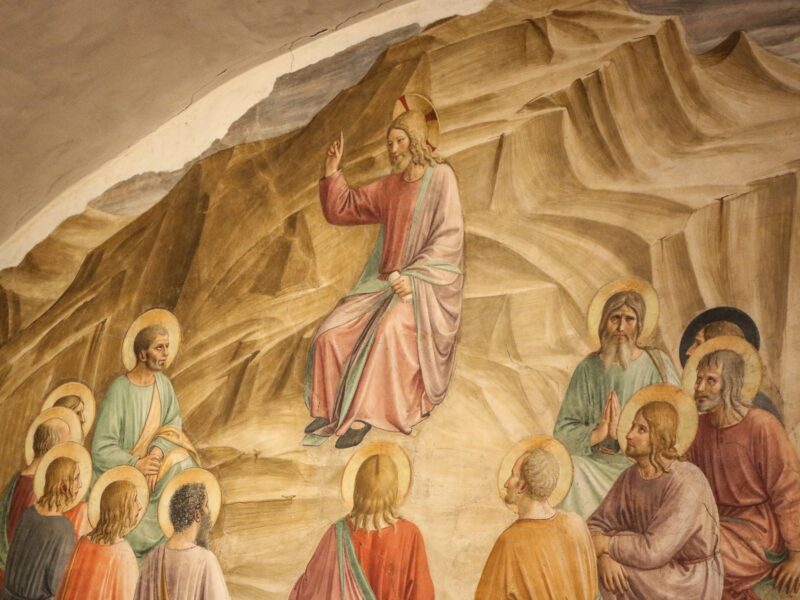
An Embarrassing Story?
First Sunday of Lent. Fr Dominic Ryan shows us how to make sense of the story of Christ’s temptation in the wilderness.
Each year on the first Sunday of Lent, the gospel spells out what happened when Christ went into the wilderness and was tempted by the Devil. Doubtless, we’ve heard the story before. Perhaps it even sounds a little embarrassing to our modern ears. Nevertheless, because it’s repeated so frequently at such an important stage of the liturgical year, it’s worth looking at what it can teach us.
So what causes the story to sound embarrassing to modern ears? Is it the idea of the Devil? If so, that’s probably because we have the wrong idea of the Devil. The Devil isn’t a man who dresses in red and who has horns on his head. On the contrary, the Devil is an angel- an immaterial being who turned against God and fought against God. He was defeated, however, and now because of his malice he tries to convince others to turn against God as well. However, once one accepts that immaterial beings could exist, then it isn’t hard to also accept that some of those beings could turn against God. And that give us a more plausible understanding of the Devil. He is an immaterial being who turned against God and who wants to turns us against God as well.
But if we can acquire a more plausible idea of the Devil, then what about the story itself. The first thing to note is the location of Jesus’s temptations; they occur in the wilderness. It’s a striking image with a rich biblical history, and as is often the case, understanding that history can help us better appreciate the point the gospel is putting across.
Here we need to recall that when Adam was expelled from the garden of paradise he went from that garden into the wilderness. And since Adam’s fall occurred as a result of the Devil’s temptation, causing human beings to live away from God as one of its consequences, then the image of ‘the wilderness’ can act as a metaphor for Adam’s fall, its cause, and its consequences. And the gospel is getting at this when it tells us Jesus went into the wilderness. Jesus deliberately went into the wilderness to seek out and to confront the cause and the consequences of Adam’s fall.
There’s a marvellous symmetry at work in Jesus’s mission. Jesus had come into the world to destroy the effects of sin in creation, and to make possible eternal life with God. And he began that task by confronting Adam’s failure head on in the very place where the cause of that failure- the Devil, is to be found i.e. the wilderness.
But as well as confronting the Devil, the gospel speaks of the Spirit leading Christ. The ‘Spirit’ the gospel refers to here is the Holy Spirit. In what way could that Spirit lead Christ though? Christ was divine after all- just as divine as the Holy Spirit- Christ was the Word made flesh.
Well typically, people lead in two different ways: by command, when dealing with subordinates, and by exhortation, when dealing with equals. But whilst the Holy Spirit couldn’t command Jesus- it was his equal after all- it could exhort him, and that is the sense of ‘lead’ which the gospel is using. So the point the gospel is highlighting is that since Christ successfully overcame the Devil’s temptations- in effect succeeding where Adam failed- then we can think of Christ overcoming the Devil through the exhortation of the Holy Spirit. In that case, we can understand Christ as offering us an example of how to deal with the Devil and all his snares: act under the guidance of the Holy Spirit, and then you’ll avoid the Devil and all his snares.
So there is a fair bit in the gospel passage especially when we consider we haven’t even touched on the individual temptations. But the heart of it is that Christ defeated the Devil and gave us an example of how to avoid the Devil’s snares. Let’s follow that example then and let’s use the grace Christ gives us to avoid the Devil and all his snares.


